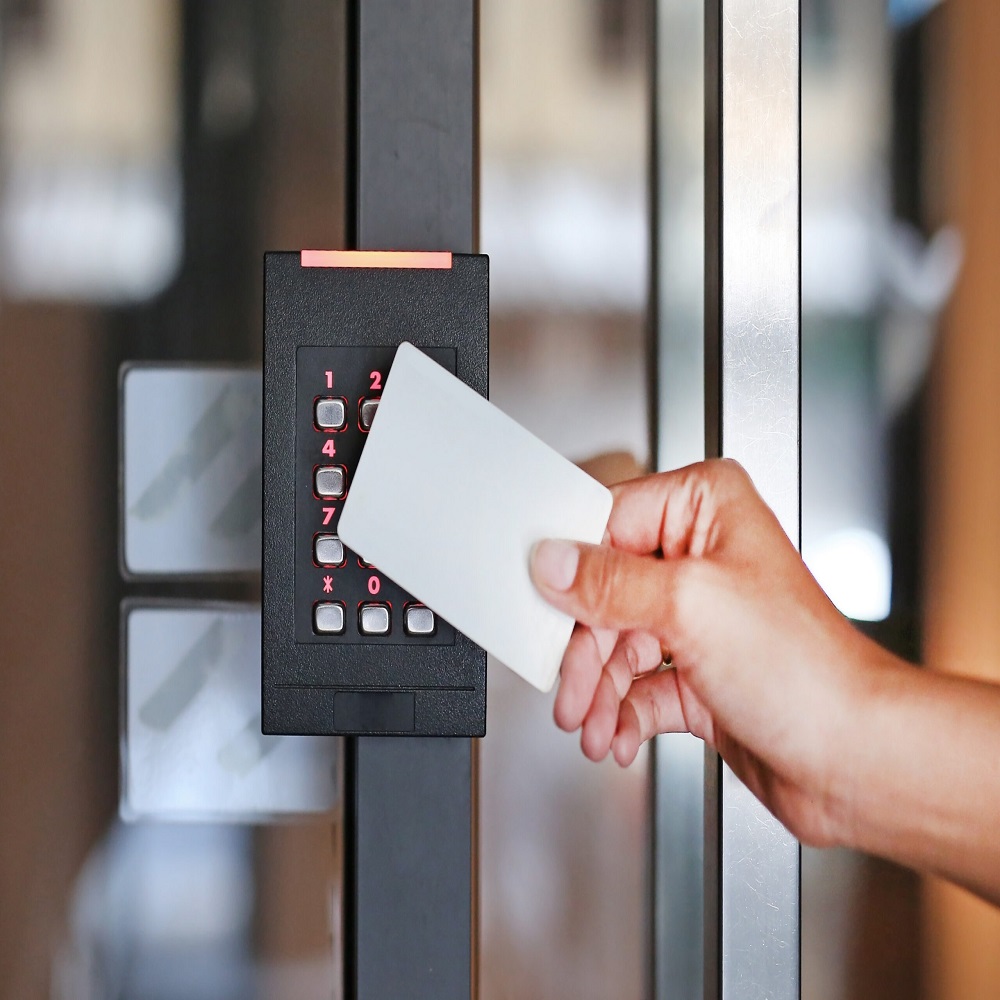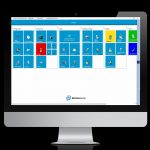The Basics of RFID Door Access Control Systems
RFID (Radio Frequency Identification) door access control systems provide secure entry solutions for various premises. They work by using radio waves to communicate between a reader and a unique RFID tag or card carried by authorized individuals. Simplified, an RFID system lets doors open for allowed people and keeps them closed to others.
Key Components of an RFID System
RFID systems consist of a few critical parts that make secure access possible. Firstly, there is the RFID reader, which sends out radio signals to detect tags. Then, we have the RFID tags or cards, which carry the unique identification data. The system also includes antennas that facilitate the transfer of signals between tags and readers. Lastly, there’s the access control panel, which processes the tag’s data to decide on access allowance.
Types of Door Access Controls
Door access controls can vary widely. They range from simple lock-and-key setups to advanced biometric systems. Basic RFID systems might use keycards or fobs. More advanced systems might integrate fingerprint readers or facial recognition technology. All aim to provide the right balance of security and ease of use to meet a facility’s specific needs.
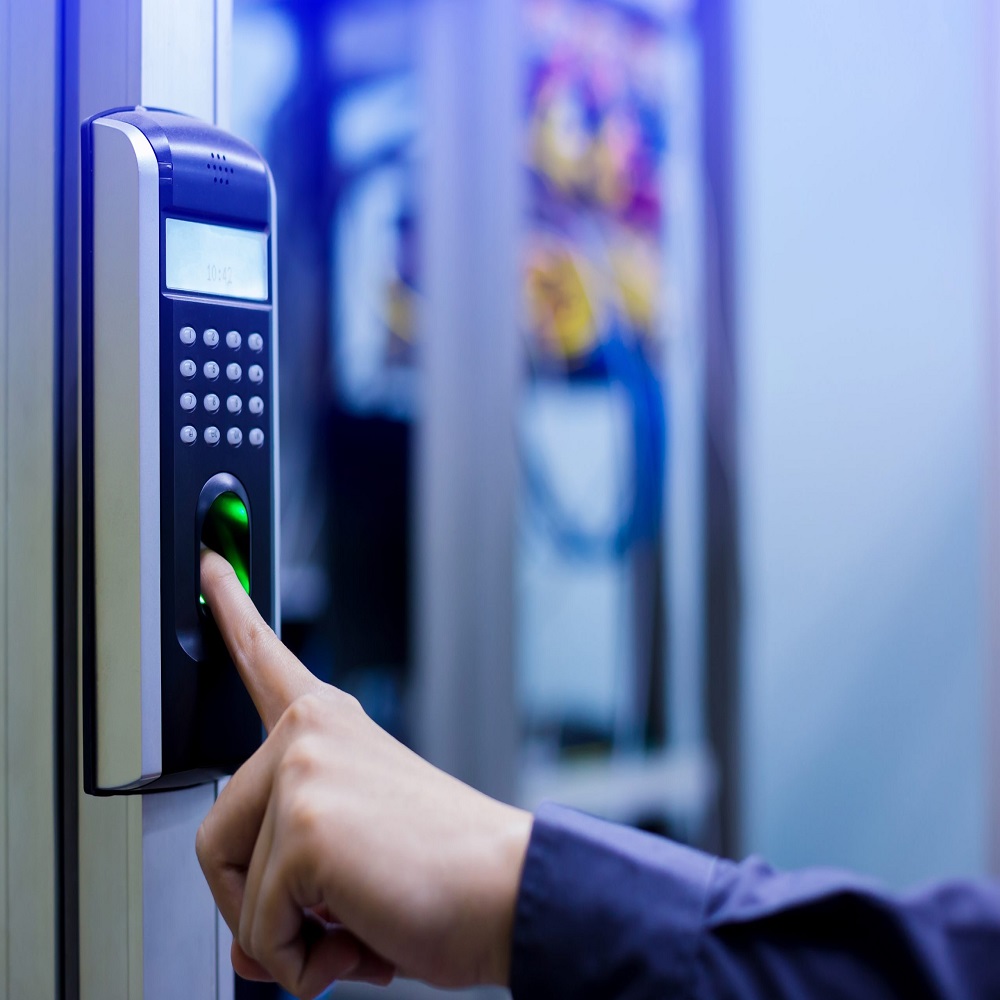
Evaluating Access Control System Needs
Before adding or upgrading an access control system, a thorough evaluation of your specific needs is crucial. This step is about understanding your unique security challenges and preparing an effective strategy to address them.
Assessing Security Vulnerabilities and Requirements
Identify all potential security gaps within the premises. Consider past security breaches and assess current security measures. Are they enough? Observe high-risk areas that may need tighter security. List down the number of entry points and their usage patterns. The goal is to develop a clear picture of where and how an access control system can augment current security protocols.
Next, identify the level of security required for different zones. Some areas might need stricter access control than others due to sensitive information or valuable assets. Then, pinpoint who needs access and to what extent. This includes employees, visitors, and contractors.
Finally, factor in any regulatory compliance that applies to your industry. For example, healthcare facilities must comply with HIPAA regulations, which could dictate certain access control measures.
Setting Objectives for Access Control Implementation
With the security vulnerabilities and requirements in mind, start setting clear objectives for your access control system installation. Ask yourself: What are the main goals? Is it to prevent unauthorized entry, track entry and exit, or both?
Consider the type of technology that would best suit your objectives. Options range from keycards and fobs to biometric systems like fingerprint or facial recognition. Think about future needs too; choose a system that’s scalable.
Detail out other objectives such as integration with existing security systems, ease of management, or the need for remote access capabilities. Your objectives should align not just with current needs, but also anticipate future security challenges.
Planning and Designing Your Access Control System
Creating an effective access control system begins with thorough planning and design. This process ensures the system meets all specific business and security needs.
Analyzing Business Requirements
Start by evaluating your business operations. Identify who needs access and when. Consider special events that may require temporary access changes. Evaluate the size of your facility and the flow of movement within it. Recognize the importance of regulatory compliance for your industry.
Next, define your security goals. Do you need to track entry and exit times? Is preventing unauthorized access your primary concern? Assessing these goals helps tailor the system to match your business’s unique needs.
Finally, factor in future growth. Select a system that can scale as your business expands. This approach avoids the need for a complete system overhaul when your needs change.
Selecting Proper Equipment for Your Facility
Choosing the right equipment is critical. The market offers a wide range of options. Some are simple keycard systems; others include biometric scans, like fingerprint or facial recognition.
Consider the infrastructure of your facility. Determine if wireless systems are preferable due to ease of installation. Evaluate whether your doors require heavy-duty locks. Decide if you need additional security features like anti-tailgating measures.
Keep in mind the overall cost. You’ll need equipment that fits your budget but still provides the required level of security. Compare different products and seek expert advice to find the best fit for your facility.
Remember, the keys to successful planning and design are clarity in business requirements and careful selection of appropriate equipment. This groundwork sets the stage for a smooth access control system installation.
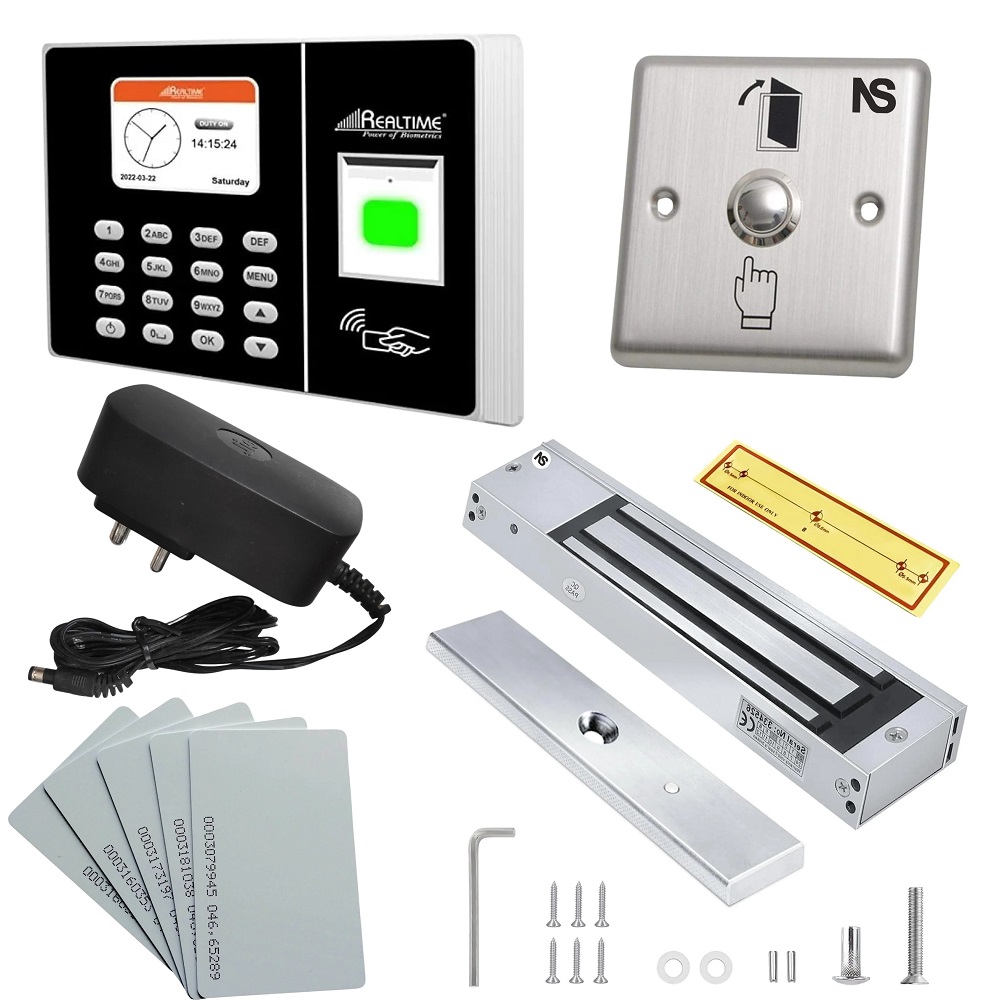
Access Control System Components and Cost
Setting up an access control system involves a variety of components. Each plays a crucial role in ensuring your premises remain secure. It’s important to be aware of the costs associated with these components to budget effectively for your security system installation.
Estimate of Cost for Access Control Components
Estimates for individual access control components vary greatly based on type and quality. Typical costs for essential items include:
- RFID readers range from $100 to $500 each.
- Magnetic locks can cost between $100 to $250 per door.
- Biometric scanners are priced at $250 to $1,000 or more.
- Exit devices like push-to-exit buttons might be around $50 to $150.
- Keycards or fobs could run from $2 to $20 per unit, depending on the technology.
Adding up these costs gives you a basic idea of what the hardware for your access control system might cost. Remember that buying in bulk often reduces the price per item.
Factors Affecting Access Control System Pricing
Several factors influence the overall pricing of an access control system:
- Number of Access Points: More doors and entryways mean more hardware and increased costs.
- Type of Technology: High-tech biometric systems typically cost more than basic RFID setups.
- Installation Complexity: Hard-to-reach areas or complex wiring can add to installation labor costs.
- Brand and Quality: Premium brands and higher-quality components may offer better reliability but come at a higher cost.
- Integration Needs: Linking with existing systems may require additional hardware or software.
It’s wise to consult with a professional to get a detailed quote that considers all factors unique to your site. This way, you’ll have a realistic outlook on the budget needed for your access control system installation.
The Installation Process of Access Control Systems
Preparing for the installation of an access control system is a critical step. It ensures that the process proceeds smoothly and efficiently. To help you understand this phase, let’s go through the necessary preparations and the actual installation steps.
Pre-Installation Checklist
Before you begin, create a detailed checklist. This will guide the installation from start to finish. Include items like gathering all hardware components, tools, and access credentials. Make sure to check the compatibility of new systems with existing security setups. Ensuring that all necessary permissions and access codes are on hand is also vital.
Key steps in the checklist should include:
- Confirming the location for each component.
- Verifying power source availability and backup options.
- Testing all equipment to prevent delays during installation.
- Arranging for a clean, safe work area free of obstructions.
- Scheduling the installation at a time that minimizes disruptions.
Having all bases covered will contribute to a successful and hassle-free installation.
Step-by-Step Installation Guide
Once the checklist is complete, it’s time to start the physical installation. Clear instructions are key to an effective setup. Careful planning means fewer mistakes and adjustments later on.
Here are the steps to follow:
- Mount the RFID readers and antennas at the designated spots.
- Install magnetic locks or other locking mechanisms on doors.
- Connect all devices to the control panel using appropriate cables.
- Securely wire the power supply to the system.
- Set up exit devices and integrate them with the security system.
- Program the access control panel with the necessary settings.
- Test each component to confirm proper functioning.
Each step is crucial. Skipping any can lead to system errors. Always follow the manufacturer’s guidelines for best results. After installation, ensure that the system works as intended. Then, train users on the new security protocol for smooth operation.
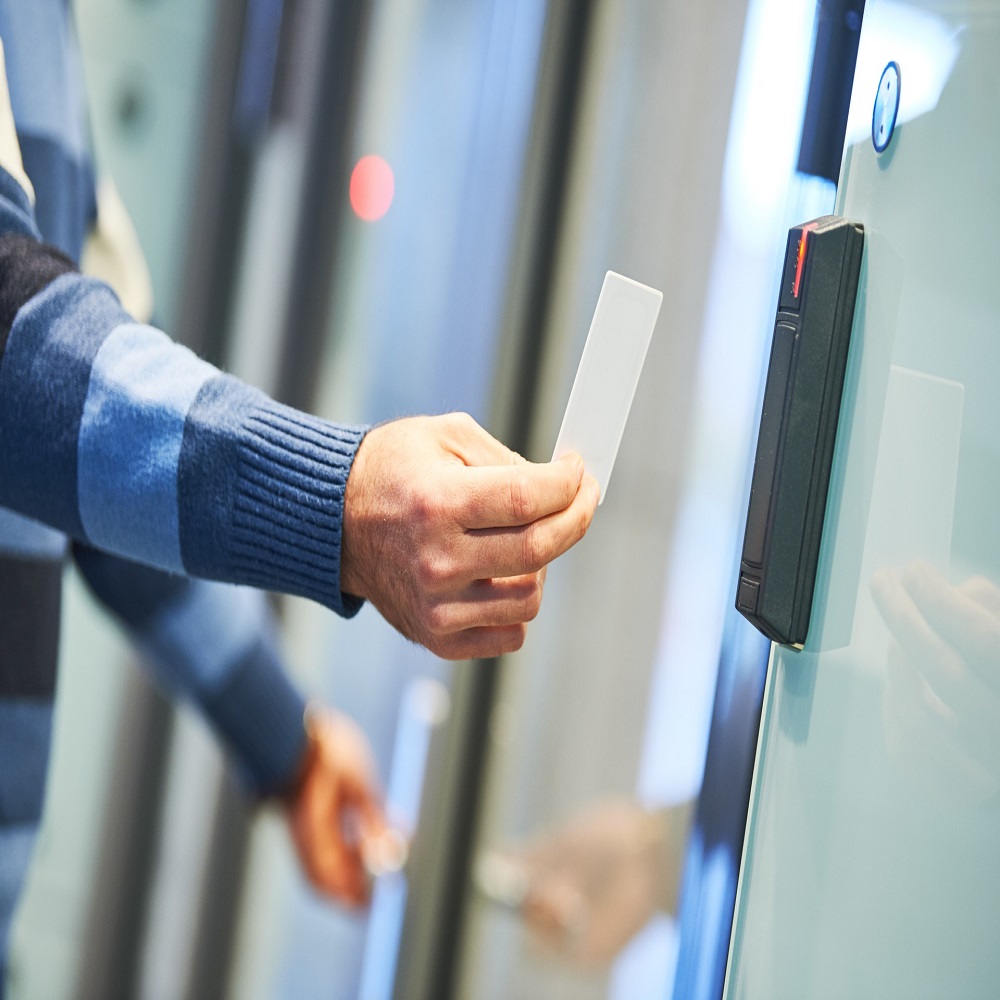
Programming and Configuring Access Control Systems
After your access control system installation, the next step is programming and configuration. This ensures that your system functions correctly and aligns with your security protocols.
System Configuration and User Setup
To start, define user roles within your organization and assign access privileges. Configure the system settings to reflect these roles. You might set up varied access levels or time-based restrictions. Make sure to add each authorized user or cardholder to the system with unique credentials. Test each user’s access to confirm correct setup. Remember to train users on how to use their access credentials properly.
Integrating with Other Security Systems
A well-integrated access control system enhances overall security. Connect your access control with other security systems like CCTV or alarms. This provides a fuller view of your site’s security and can trigger alerts if needed. Ensure that all systems communicate seamlessly with each other. Check for compatibility issues and adjust settings where necessary. Collaborate closely with your IT team for smooth integration.
Proper programming and configuration of your access control system are crucial to its effectiveness. Take the time to ensure each step is done with care and consider the retrieval results for additional tips and guidance. Keep refining your system’s settings as your organization’s needs evolve.
Testing and Troubleshooting Post-Installation
After setting up an access control system, testing and troubleshooting are crucial. These steps confirm the system’s reliability and ensure it meets security needs.
Conducting System Tests
It’s important to rigorously test the access control system after installation. Start with basic operations like scanning RFID tags and entering access codes. Check for proper door locking and unlocking responses. Test the integration with other security systems, such as alarms and CCTV, to ensure seamless operation. Pay attention to time-based access controls and verify they function within set parameters. Record any issues or irregularities for troubleshooting.
System tests should include all user roles and access levels. Make sure employees and guests can access the areas they are authorized to use. Ensure that alerts and logs for entry and exit activities are accurate and timely. It may be helpful to perform tests during different times of the day or during peak usage to evaluate system performance under various conditions.
Resolving Installation Challenges
If you encounter any problems during testing, it’s time to troubleshoot. Check and recheck all connections and configurations. Look for common issues like loose wiring or misaligned readers. Review system settings to confirm that access permissions are correctly assigned. Consult the manufacturer’s guidelines or seek the help of a professional if you’re unable to resolve the issue.
Sometimes, the problem may be with the user’s access credential. Ensure all RFID cards or codes are active and properly programmed. If any hardware is defective, arrange for repairs or replacements as needed. Keep a detailed record of all troubleshooting steps and solutions for future reference.
Effective troubleshooting often requires a systematic approach. Be patient and thorough when working through each possible cause of malfunction. Once resolved, perform additional tests to make sure the fix is successful. Reliable access control is essential for the security of your premises, making these post-installation steps critical.
